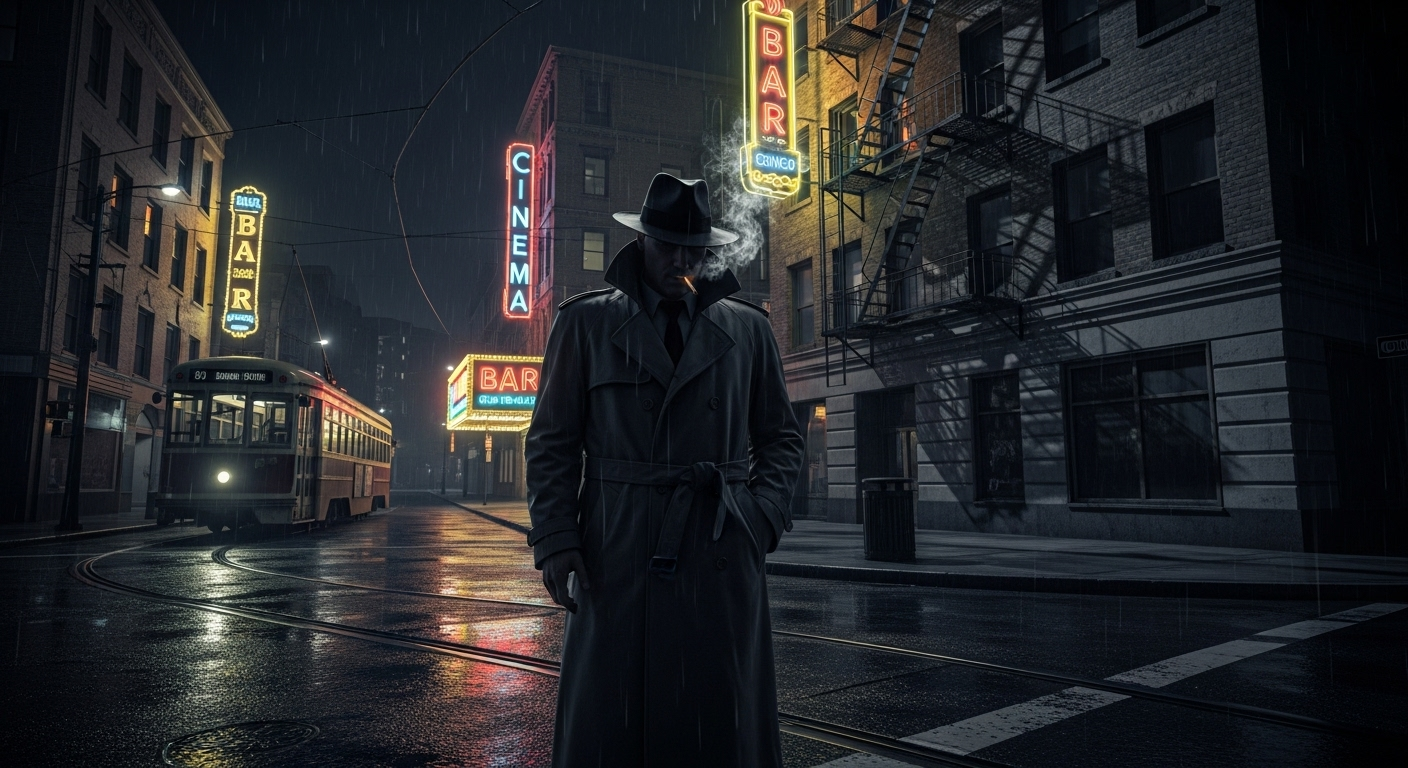Withstanding the Test of Time: An Examination of Film Noir's Persistent Influence
Introduction: Film Noir, a cinematic term used primarily to describe stylish Hollywood crime dramas, particularly those that emphasize cynical attitudes and sexual motivations, continues to influence modern movie-making. This article delves into the historical context, key developments, and the lasting impact of this genre on current films and trends.

The Emergence of Film Noir
Born in the 1940s and 1950s, Film Noir was a product of post-World War II America. As soldiers returned home to a society significantly altered by war, Hollywood began producing gritty, gloomy narratives reflecting the nation’s collective disillusionment. Film Noir, characterized by low-key lighting, disorienting visual schemes, and complex, often convoluted narratives, emerged as a stark contrast to the popular, upbeat musicals and comedies of the time.
Key Developments in the Genre
Film Noir’s distinctive style and narrative devices dramatically evolved throughout the mid-20th century. Movies like “The Maltese Falcon” and “Double Indemnity” played a significant role in shaping the genre, introducing the world to the quintessential hard-boiled detective, relentless femme fatale, and treacherous urban landscape. These elements became the backbone of Film Noir and continue to impact modern cinema.
The Current State of Film Noir
Film Noir’s distinctive style hasn’t faded into obscurity; instead, it has adapted and evolved, finding a home in contemporary cinema. Modern filmmakers, like Quentin Tarantino and the Coen Brothers, frequently pay homage to the genre in their work, incorporating Film Noir’s stylistic elements and narrative techniques. Recent films like “Blade Runner 2049” and “Sin City” are testament to Noir’s lasting influence, with their complex anti-heroes, intricate plots, and shadowy cinematography.
Impact and Reception of Film Noir
Film Noir’s influence extends beyond the cinema. It has permeated literature, graphic novels, and even video games. The genre’s themes of moral ambiguity, pessimism, and fatalism resonate with many, contributing to its lasting popularity and continued exploration in various art forms. Critics frequently laud Film Noir for its unique aesthetic and its ability to comment on societal issues, solidifying its place in cinematic history.
Film Noir: A Lasting Legacy
Despite its roots in the mid-20th century, Film Noir remains an influential genre in contemporary cinema. Its distinctive style and narrative devices continue to inspire filmmakers, contributing to its enduring legacy. As we move forward, it will be interesting to see how Film Noir adapts to changing societal norms and attitudes, ensuring its relevance and impact for future generations.
In conclusion, Film Noir’s persistent influence is a testament to its unique style and thematic depth. As a genre born out of societal disillusionment, it continues to resonate with audiences, reflecting our own anxieties and fears. As we continue to explore its rich history and legacy, Film Noir will undoubtedly remain a significant influence on the arts and entertainment industry.




